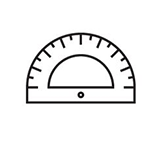앨리게이터 악어화석(Alligator Replica)20121029-1 

판매가 350000
할인판매가 350,000원 총 할인금액 원 (모바일할인금액 원)
적립금
- 0원(0%)
-
원 %
-
원 %
-
원 %
-
 원 %
원 %
-
원 %
-
원 %
-
원 %
-
원 %
| 국내/해외배송 | |
|---|---|
| 배송비 방법 | 택배 |
| 배송비 | 4,000원 (50,000원 이상 구매 시 무료) |
| 수량 |
|
| 상품 정보 | 가격 | 삭제 |
|---|---|---|
| [총 상품금액(수량)] 0 (0개) | ||
일반명 : 앨리게이터 악어화석(Alligator Replica)
학 명 : Diplocynodon darwini
지질시대(Age) : 신생대 중기에오세(Middle Eocene, About 47 My)
원산지(Locality) : Messel Pit, Darmstadt Germany
크 기 : Slate 61x32 cm
Scientific classification
동물계(Kingdom: Animalia)
척삭동물문(Phylum: Chordata)
파충강(Class: Reptilia)
악어목(Order: Crocodylia)
앨리게이터상과(Superfamily: Alligatoroidea)
Subfamily: †Diplocynodontinae
Genus: †Diplocynodon Pomel, 1847
디플로치노돈 다르위니(Diplocynodon darwini)는 중간 형태의 앨리게이터로 아래턱의 네번째에 치조가 없다는 점에서 크로커다일과 구별된다. 머리뼈의 특징은 현생 악어와 비슷하나 강하게 장식된 머리표면과 입을 크게 벌리기 위해 뒤로 이동한 턱 관절, 매우 뾰족한 이빨을 가진 점이 크로커다일과 다르다고 할 수 있다. 악어는 백악기말의 대멸종에서 살아남은 파충류이며 신생대 제3기에 따뜻한 기후 때문에 주로 유럽지역에서 퍼져 살았다.
메셀(Messel)지층에는 악어가 아주 풍부했다 : 이곳에서 발견된 일부 종과 표본으로 인해 매우 유명한 화석산지로 알려졌다. 이곳에서 발견되는 화석표본들은 새끼나 성체와 같이 매우 다른 나이 대를 가지고 있다. 어떤 경우라도 메셀에서 발견된 악어들은 1.5미터를 넘는 경우가 발견되지 않았다. 분류학적 수준에서 신생대 팔레오세부터 중기 마이오세까지 약 5천만년 동안 유럽에서는 뾰족한 머리와 이빨은한 디플로키노돈(Diplocynodon)속만 발견되었다. 이 원시악어는 신생대 제3기 동안 지속되었다. 어찌됐든 현재 이 악어 종은 미국과 중국에서만 발견되고 있으며, 이 악어(Diplocynodon darwini)는 주로 물고기, 동물 살과 곤충 애벌래를 주 먹이로 했다.
Observations: In Messel fauna crocodiles are abundant: several species and specimens are known from the famous fossiliferous locality. These fossils include individuals of different ages: young and adult individuals together. In any case, the most common crocodile found in Messel did not reach large sizes; it could grow up to about 1.5 m! At taxonomic level, this animal belongs to the species-reached genus Diplocynodon, characterised by a pair of long and pointed teeth for seizing its victims, spanned in Europe for almost 50 My, from Palaeogene to Middle Miocene. It is a part of a Tertiary radiation of the primitive alligators, which colonised several parts of the world. Anyway, at present, alligators only live in America and China. Like its modern relatives, Diplocynodon darwini had to spent much of its time in the water looking for prays (fish, animal flesh, and insects when young).
디플로치노돈(Diplocynodon) 유럽에서 신생대 초인 팔레오세부터 중기 마이오세때까지 약 4900만년 동안 살았던 엘리게이터과의 멸종악어이다. 그것이 작은 모습의 목, 배, 등 그리고 갑옷과 뼈 그리고 짧은 꼬리(토끼처럼) 등이 현대의 작은 엘리게이터 악어종인 카이만과 매우 유사해 보인다. 디플로치노돈(Diplocynodon)은 길이가 4미터인 종도 발견되지만 에오세에서 발견되는 종은 1미터 이내이다. 이들은 아마도 물고기, 동물들을 사냥하고 살았을 것으로 보고 있다. 19세기에 D. steineri종은 오스트리아의 스티리아(Styria)에서 명명되었으며, D. styriacus는 오스트리아와 프랑스에서 명명되었다. 세번째 오스트리아 종 Enneodon ungeri는 이 속에 배치되었다. 티플로치노돈(Diplocynodon)의 오스트리아와 프랑스 종은 2011년에 E. ungeri과 유사종(synonymised)으로 분류되었고, 학명 디플로치노돈(Diplocynodon)이 에네오돈(Enneodon)보다 우선순위가 있기 때문에 이종은 이제 D. ungeri라고 한다. 가장 잘 보존된 표본은 독일의 메셀층(구덩이)에서 발견되었다. 잘 보존 된 표본은 독일의 Messel 구덩이에서 발견되었습니다.에오세 지층은 메셀은 유기물이 많은 진흙 뻘 담수호 조건으로 인해 완벽하게 보존될 수 있었다.
Diplocynodon is an extinct genus of alligatoroid that lived during the Paleocene to middle Miocene 49 million years ago in Europe. It looked very similar to the modern caiman in that it was small and had bony armour scutes covering its neck, back, belly, and tail. The longest Diplocynodon recovered was 4 feet in length and probably fed on fish, animal flesh, and took insects when young.In the nineteenth century, D. steineri was named from Styria, Austria and D. styriacus was named from Austria and France. A third Austrian species, Enneodon ungeri, was placed in its own genus. The Austrian and French species of Diplocynodon were synonymized with E. ungeri in 2011, and because the name Diplocynodon has priority over Enneodon, the species is now called D. ungeri.
Well preserved specimens have been found in the Messel Pit in Germany. In the Eocene epoch, the pit was a swampy freshwater lake that was perfect for preserving fossils due to anoxic conditions at its bottom.
[참고]
1875년경 고생물학자 루돌프 루트비히는 처음으로 악어화석 일부를 발견한다. 덕분에 많은 학자들에 의해 다양한 표본들이 발견되지만 화석이 발견되는 층의 암질이 습기가 변화하면 급속하게 파괴(붕괴)되는 관계로 보존할 수가 없었다. 이후 1960년경 합성수지를 이용하는 방법이 시도 되면서 현재의 표본보존 방안이 완성되었다. 이 방법은 제일먼저 .화석이 발견되면 표면이 마르기 전에 빨리 발굴한 후 그 위에 합성수지를 넓게 바른다. 그러면 오일셰일퇴적암 암질속에 있던 화석은 합성수지에 고착되어진다. 이후 합성수지 판을 회수하여 2차 발굴을 완성하고 합성수지의 외곽을 절단하여 완성된다.
이런 관계로 메셀화석 표본을 보면 마치 레플리카(Replica=진품화석을 복제하여 전시 연구하는 방식의 표본제작 방식)로 만든 가짜화석(복제본)처럼 보인다. 그러나 표본을 자세하게 관찰하면 화석부분은 수지가 아니아 실물화석이란 것을 알 수 있다. 이러한 방식은 화석의 보존에서 종종 사용하는 특수공법이다.



















 확대보기 및 상세정보
확대보기 및 상세정보